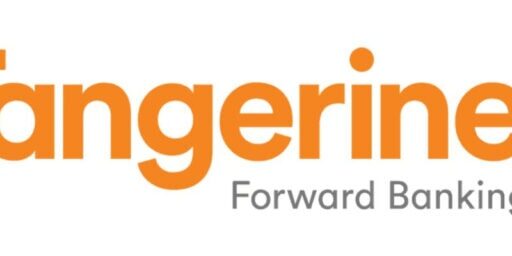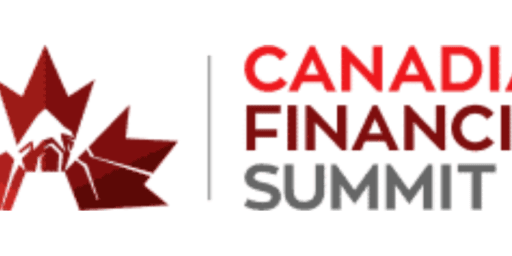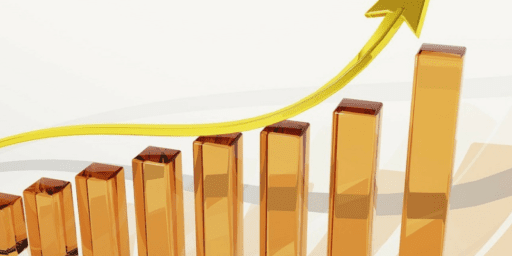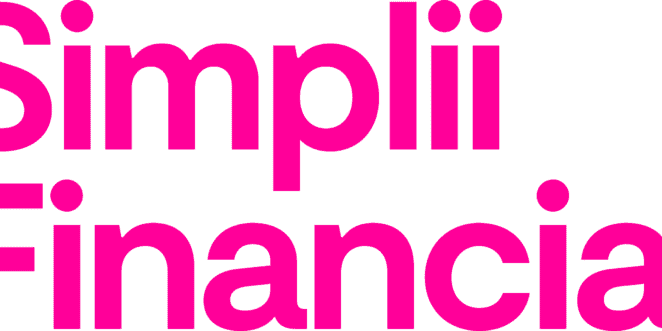Simple Low Cost Diversified Index ETF Portfolios 2025
We’ve been writing about low-cost ETFs in Canadian index portfolios since 2008. Below is our 2025 update.
ETFs, or exchange-traded funds, first entered the Canadian market over a decade ago. From day one, they impressed us as an excellent tool to help you build a low-cost, diversified portfolio.
As time has passed, ETF providers have created tools that make index investing easier than ever. All-in-one ETFs, or “portfolio ETFs” mean that you’ll never have to worry about rebalancing your portfolio, even if you use a DIY online broker.
In this post, we’ll dig into both ETF investing options:
- Using all-in-one ETFs as the simplest way to build a portfolio that stays balanced automatically, or
- Building simple ETF portfolios (with examples) if you’d rather manage your own rebalancing.
Either way, you’ll have a diversified portfolio that costs you less than robo-advisors and big bank mutual funds.
What Is a Diversified Portfolio?
A diversified portfolio contains many different assets, including stocks and bonds from all over the world. Building a portfolio with a variety of assets, markets, and geographical areas is wise for several reasons, but one huge advantage is the fact that it offers some protection if one of the stocks you hold crashes and burns.
It’s like the saying goes: “don’t put all your eggs in one basket.” When you have a diverse portfolio (with lots of different baskets), you give yourself a better chance of not losing as much if one of the baskets crashes.
It’s possible (and advisable) to build a diversified portfolio at any risk level. Even if you’re an aggressive investor with a high risk tolerance, there’s no reason to run additional risk by not diversifying!
What Are ETFs and Why are They Great for Diversifying Your Portfolio?
ETFs are exchange-traded funds that follow the fluctuation of specific markets and include a number of companies within them. To continue our analogy, when you purchase an ETF, you’re not putting all your eggs into one basket, you’re spreading them into multiple baskets with a single purchase.
The great thing is that these baskets are usually made up of some pretty impressive multi-national companies, and you know how those folks like to make revenue. You can read our guide for the best ETFs in Canada to find the ones we like best.
ETFs are so simple and effective that many experts recommend portfolios that are entirely – or almost entirely – made up of ETFs. You can read the rationale in a recent guest post, Can You Invest Solely in ETFs?
Why All-in-One ETFs are the Simplest Option for a Diversified Portfolio
When we first published this post back in 2008, we wrote it for ETF investors who would be balancing their own portfolios. And while individual ETFs are better diversified than single assets like stocks and bonds, they can still feel intimidating for beginner investors and they still require some active management.
Enter the all-in-one ETF.
All-in-one ETFs take simplicity and diversification even further. Think of them like mutual funds, only minus the high fees.
Purchasing an all-in-one ETF is like purchasing an actively managed portfolio that you never have to rebalance—you just pick your preferred risk tolerance, choose an ETF that matches it, and hit “Buy” on the DIY investing platform of your choice.
Canadian investors have access to a selection of all-in-one ETFs from various reputable companies, from Vanguard (the all-in-one pioneer) to iShares, BMO, and TD. You can read all the details in our guide to the Best All-in-One ETFs in Canada. You can also check out a comparison of two of the biggest providers in our Vanguard vs iShares All-in-One ETF comparison piece.
Top 3 Places to Buy ETFs in Canada
While DIY investing can intimidate newer investors, ETFs, and especially all-in-one ETFs, make it easy for complete beginners to build a portfolio.
Here are our top 3 recommended DIY brokers, all of which offer at least free buying (and often free selling) of a selection of ETFs.
| Review | ETF Commission | Trading Fees | Welcome Offer |
| Qtrade | Free buying and selling of 100+ ETFs (including a few all-in-one ETFs) | $8.75 ($6.95 elite accounts) | $100 Free + Up to $2,000 cashback |
| Questrade | Free buying (not selling) of any North American listed ETFs (includes all-in-one ETFs) | $4.95-$9.95 | $50 in free trades |
| BMO InvestorLine | Free buying and selling of 80+ ETFs (includes all-in-one ETFs from Vanguard, iShares, BMO) | $9.95 ($7.95 elite accounts) | None |
What Does a Good Low-Cost ETF Portfolio Look Like?
While we recommend all-in-one ETFs for anyone, sometimes an investor wants more control over their portfolio. Maybe you prefer to make your own decisions about rebalancing, or maybe you have specific ETFs you want to include.
The ideal low-cost ETF portfolio will vary depending on your investment goals and preferences, so we’ve included more than one example portfolio here. Read on to see some of our favourite well-diversified ETF portfolio examples.
We start with a mix of US and Canadian ETFs, but we also provide some all-Canadian examples for investors who want to avoid currency conversion fees. If you want to learn more about keeping your investments in Canadian currency while still investing in US equities, check out our article on the Best Canadian Dollar (CAD) ETFs for U.S Equities for a detailed analysis.
Note: MER stands for Management Expense Ratio, and measures how much of a fund’s assets are used for administrative and other operating expenses. Think of it as the fee you pay to include that asset in your portfolio. The lower the MER, the better.
The Diversified Low-Cost ETF Portfolio Option 1 (mix of CAD and USD)
Our first sample portfolio includes five different ETFs covering domestic, American, global, and emerging markets.
| Index | ETF | MER |
| Canadian Index | XIC (CAD) or VCN (CAD) | 0.06% |
| Total U.S Market | VTI (USD) | 0.03% |
| 70% Europe, 30% Pacific | VEA (USD) | 0.05% |
| 99.62% Emerging Markets, 0.38% North America | VWO (USD) | 0.10% |
| Canadian Short Term Bond Index | VSB (CAD) | 0.11% |
Option 2: Only 4 ETFs, Mix of CAD and USD
To simplify your portfolio further, consider replacing VEA and VWO above with VXUS, reducing your total ETFs to 4 and including some small cap coverage. I like VXUS because it has broad international exposure and has a low MER (0.07%), however, the drawback is that it includes some Canadian coverage (duplication).
| Index | ETF | MER |
| Canadian Index | XIC (CAD) or VCN (CAD) | 0.06% |
| Total U.S Market | VTI (USD) | 0.03% |
| Total International Index | VXUS (USD) | 0.07% |
| Canadian Short Term Bond Index | VSB (CAD) | 0.11% |
Option 3: 5 ETFs, CAD Only (Non-hedged)
I added this option for readers who want to avoid the FX conversion from CAD to USD. Vanguard and iShares have a number of ETFs that are low cost, in CAD, and non-hedged (hedging is known to underperform over the long term).
| Index | ETF | MER |
| Canadian Index | XIC (CAD) or VCN (CAD) | 0.06% or 0.05% |
| Total U.S Market | XUU(CAD) | 0.07% |
| International Index (MSCI EAFE) | XEF (CAD) | 0.22% |
| Emerging Markets Index | VEE (CAD) | 0.24% |
| Canadian Short Term Bond Index | VSB (CAD) | 0.11% |
Option 4: Simplest Non-All-In-One Option, Only 3 ETFs, CAD Only
| Index | ETF | MER |
| Canadian Index | XIC (CAD) or VCN (CAD) | 0.06% |
| All-World ex-Canada Index | XAW (CAD) | 0.21% |
| Canadian Short Term Bond Index | VSB (CAD) | 0.11% |
What Are My Other Options For a Low-Cost ETF Portfolio?
As you can tell from the assorted options we’ve provided, there are lots of ways to tweak the portfolio. The ideal allocation for you will depend on your preferences. For example, I originally chose XIC over XIU because of the lower MER.
However, if you prefer an all-Canadian-dollar portfolio, then you’d be opting for a higher MER in exchange for the ability to avoid currency conversion fees. It’s all a trade-off. VTI, the total U.S market ETF, is a steal in my opinion as it covers the whole U.S market without having to purchase separate funds for the Russell 2000, S&P 500, DJIA, and Nasdaq.
However, if you’re looking for a higher potential return and willing to take on a bit more risk, you may want to purchase a U.S small cap ETF separately. To see more about low-cost US ETFs, check out our guide on how to build a simple low cost portfolio in USD.
VSB, a Canadian short term bond index, was chosen because short-term bonds are known to have a lower correlation with the equity markets than long-term bonds. Having a bond portion in the portfolio will reduce volatility while only slightly reducing potential returns. The bond portion will start out small (maybe non-existent) in the early years but increase in percentage as the portfolio gets closer to funding retirement. An alternative would be to choose the total Canadian bond index using VAB (MER 0.09%).
What About Dividend ETFs?
It’s also prudent to mention that there are some great dividend earning ETFs out there as well, such as the iShares Core MSCI Canadian Quality Dividend Index ETF, which offers a 4.35% dividend yield and a low MER at 0.11%.
For US ETFs, you have options like the Vanguard Dividend Appreciation ETF (VIG), which offers an annual dividend yield of 1.81% and a 5-year average annualized return of 11.60% at a low MER of 0.06%. You can also read more about our picks for The best Canadian dividend ETFs, and the best ETFs for U.S equities for more options.
What is the best way to allocate funds for a beginner’s ETF portfolio?
As a rule of thumb, beginner investors who are a little more aggressive may want to start at a bond allocation of 20-25% of their portfolio, and 40%+ for more conservative investors.
There are a number of “balanced” mutual funds that hold 40% bonds. As another example, Canada Pension Plan holds 30% bonds with a “retirement” timeline of 75 years. Bond allocation typically increases with age to reduce the impact of a large market correction when you are withdrawing from your portfolio during retirement.
To see the latest of the “easy” ETF portfolios, check out Vanguard’s newest products, VGRO and VBAL. Essentially all in one balanced ETF portfolios that have very low MERs.
There Are Many Options When Choosing How to Build an ETF Portfolio
Today we shared some of our best recommendations to start diversifying your portfolio with a few simple ETFs. The simplest way to get started is to invest in all-in-one ETFs, which are essentially pre-made portfolios that are actively managed for you at a low MER.
If you prefer to do your own management, any of the portfolios above are good starting points. Before you begin to purchase ETFs, decide your risk level and tolerance for USD/CAD exchange fees.
Whether you want 3, 5 or 10 ETFs in your portfolio, getting started is easy. Check out our top low-cost brokers, Qtrade, which offers 100 free ETFs, and Questrade where you can buy ETFs for free.
How do our ETF portfolio examples look to you? What would be your picks for a diversified low-cost ETF portfolio? Or would you prefer to invest in all-in-one ETFs?
Discover the best free ETF brokers in Canada
View our detailed Canadian broker analysis
I've Completed My Million Dollar Journey. Let Me Guide You Through Yours!
Sign up below to get a copy of our free eBook: Can I Retire Yet?











Hello, you mention that Qtrade offers a few all-in-one ETFs commission free. Can you list these and comment on them from your perspective? Thank you :)
Hi FT,
I’ve been following your site for years and I was hoping to get your opinion on the performance of ETFs vs index mutual funds like TD e-series. ETF MERs are definitely attractive and this is a fund and period dependent question, but how does the net return of ETFs compare to equivalent index mutual? Have you posted anything doing a side by side comparison?
Based on a quick review some ETFs look to be performing returns at or below some of their equivalent index mutual which would erode the MER advantage. Anyhow, this wasn’t an exhaustive analysis on my part so I’m curious on your thoughts. Given how popular ETFs have become, I have to think the data shows they are the clear winner for investors.
Are you aware of some good articles or analysis on this topic?
Thanks in advance.
Good question Mike. I haven’t done a direct comparison of TD e-series Canadian index vs shares Canadian index ETF (or other indices). They should be close when you include the dividend providing that they are tracking the exact same index (some track TSX60, others the entire index). Providing that they are tracking the index and have low tracking error, the ETF should outperform by a bit due to the lower MER.
Thanks for the explanation, that makes sense. Mike
Great article, as always! I took a closer look at the “CAD only (non-hedged) Diversified Low-Cost ETF Portfolio” and noticed that neither iShare XEF (Developed) or Vanguard VEE (Emerging) include South Korea. Seems like a bit of a gap in the worldwide coverage (missing companies like Samsung and LG). It looks like this is because iShares considers Korea an “emerging” economy while Vanguard considers them “developed.” So, I switched Vanguard VEE to iShares XEC instead.
Good tip about South Korea Mike. XUU/XEF/XEC is the combo that I’m using for my wife’s LIRA.
I see you updated the recommendation in September 2017.
Next time you travel to the future, can you please bring back some more recommendations. It would help a lot!
I laughed out loud when I read your comment. Fixed the date. :)
Mawer is not a bad option, but I wouldn’t go that route due to active manger risk, and, in fact Mawer funds do not actually outperform their proper risk adjusted benchmarks, as explained here.
http://www.canadianportfoliomanagerblog.com/active-funds-exposed/
If you wanted a one fund option, which is certainly a good idea, than I’d go with Tangerine Index Funds. Better to have the certainty of market returns (less fees), rather than the remote hope of outperformance.
Why not just invest in Mawer Funds? Mawer Balanced Fund would be an easy one stop solution rather than a mix of ETFs. MAW104 has beaten the index benchmarks 90% of the time and is ahead by a substantial percentage over the long term.
I have opted to use the “The Diversified Low Cost ETF Portfolio (mix of CAD and USD)” in my RRSP but since I had started over a year ago the canadian dollar has lost ground against the USD. Would it be wise to start to contributing to the “CAD only (non-hedged) Diversified Low Cost ETF Portfolio” and still keep my USD etfs. I would use XUU in replacement of VTI, XEF for VEA and VEE for VWO. Obviously I would keep the same allocation and would resume contributing to my USD etfs when the candian dollar strengthens against the american dollar. Or is the conversion difference trivial in the long term over my investment life time?
Also I’m going to start investing in my TFSA since I will be maxing out both accounts this year. Would the “CAD only (non-hedged) Diversified Low Cost ETF Portfolio” be appropriate in my TFSA??
Thanks
I would like to ask you for help: software itself (I don’t deal this} put request for disability tax credit. I don’t know hov to fix it. Please help me.
Best Regards, M. Kantor.
Nice article. I’m interested in your comment that short term bonds have a lower correlation to the stock market than long term bonds. I think that would depend on whether the crash was in an inflationary environment (more common), or a deflationary environment (like 2008). Could you refer me to a resource that discusses this issue? Thanks.
Since Vanguard recently decided to include Canada in their VEA investment strategy, it became less of a good choice for diversification if you already own VCN. I moved to iShares’ IEFA instead, which excludes US and Canada, at a reasonable 0.12% MER.